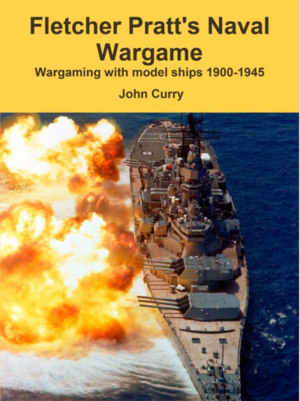
Author: John Curry
Publisher: Wargaming.co
Year: 2011 (Originally published in 1940)
Players: Three to one hundred and twenty players
Ages: 10+
Playing Time: Three hours to days on end
Genre: Dreadnaught to WWII era naval miniature rules
Retail Price: $24.95 on Amazon.com
It may seem a bit strange to review a game that essentially hit the market well over sixty years ago but a new reprinting of Fletcher Pratt’s Naval War Game has been made available from wargaming.co. As someone who spent a whole lot of years playing Fletcher’s (as we referred to it) and many other naval miniatures rules, I was really excited to learn that this new edition was in print. The Fletcher Pratt Naval War Game was one of the most successful naval wargames of the 20th century.
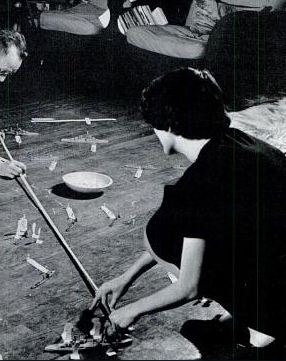
There are some interesting articles that appeared in Life and Sports Illustrated which you can find online that go into a lot of detail about the popularity of Fletcher’s and the incredible amount of investment people had in the game. It’s funny to read about clubs that would play in actual ballrooms, that had a bar onsite that people would have a cocktail or two while they were playing, with cheering sections for spectators. All the B&W photos come from the October 10th, 1938 issue of Life magazine.
It’s important to point out that Fletcher’s can be adjusted for any size so you don’t have to look around for a gymnasium floor to fight it out and a large room or garage floor will nicely fit the bill. We played on areas as small as a kitchen floor measuring no bigger than 10’x10’ with the right scale ships.
In a nutshell, there are three items a player focuses on during a game of Fletcher’s: Moving your ship, calculating the range to fire at your target, and applying any damage received from hits your enemies scored on your ship adjusting the capabilities of your ship. Damage is based on step reduction as each ship has a different point total based on various factors of the real world vessel.
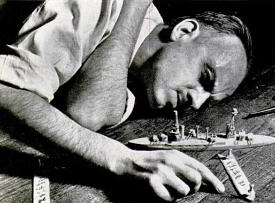
Next I have thirty seconds or even up to a minute to estimate the distance to my target and jot that down on my firing sheet along with what guns I’m firing. The original rules automatically include how the shells will fall in the “spread” but we used to write down the distance and how the other shots would trail. I had completely forgotten the spread rules in Fletcher’s because we used to use the range as the starting point and go from there. I could guess 97” and fire ten guns with a ¼” spread so the first shell drops at 97”, the next 96 ¾”, then 96 ½”, and so on. It turns out that the original rules didn’t call for that as your shells will fall beyond and behind your estimated distance.
Also included in the original rules and something that we would toss out, because the scale we would play was much smaller than that called for, was to point an arrow at your target. The measurement to the target would run along this arrow so if you were spot on with the range you might eyeball the target wrong and your shots will land in the drink. I did try this with a few games I ran and it really did add some crazy moments to the proceedings. The arrows did play a large role because they would determine where the shells would hit. Did your shot just hit a turret? Maybe you scored a deck hit on a ship that had very poor deck armor!
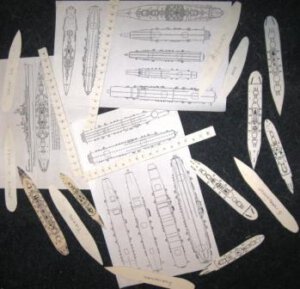
Once the referee would measure out the firing and mark on the floor, or on the ship where the shots landed, you would find out how much damage you dealt and also received. As this incorporates a damage reduction system there are no critical hits for a devastating shot sinking a ship in a single blow. Each ship has a total number of damage points and as it loses these points, speed is lost, guns are knocked out, and torpedo tubes are destroyed.
It sounds much more complex than the game actually is. Let’s go back to my example of the battle against Captain Miller.
I move my ship and do my best to make sure I leave myself in a position where I can fire the most guns in a broadside; I’m already in range but I steered closer to him to give my 10” guns a better chance to penetrate his armor. I think Elliott is right around 78” away so I write that range down and take my aiming arrow to point toward his ship. I’ve gotten down to eyeball level on the floor, behind my ship, to make sure I get it right. In games that would have more than one referee I would step away from my ship as they measure my shots, as well as anyone firing at me, so I can’t cheat and try to get a peek at the measurements on the tape measure. Since we only have one ref, I hold the end of the tape measure on my ship and have to look directly down at the ship while the ref measures my range estimate.
The ref moves along and measures out the other ships in the battle and begins to calculate the hits and damage. I can see across the floor that I’ve scored hits on Elliott but I also see my ship has hit markers on it as well. The ref then comes around to tell each player if he hit their target (but not what damage they have done) and how much damage they have received with and hit they may have received. Our referee informs me that I landed two hits on Elliott but that dreaded dead eye Capt. Miller has dropped four shots into my vessel. His guns are large enough so the shells have penetrated the armor where they hit. This means each shell will do full damage; if they hadn’t penetrated then it would be half damage.
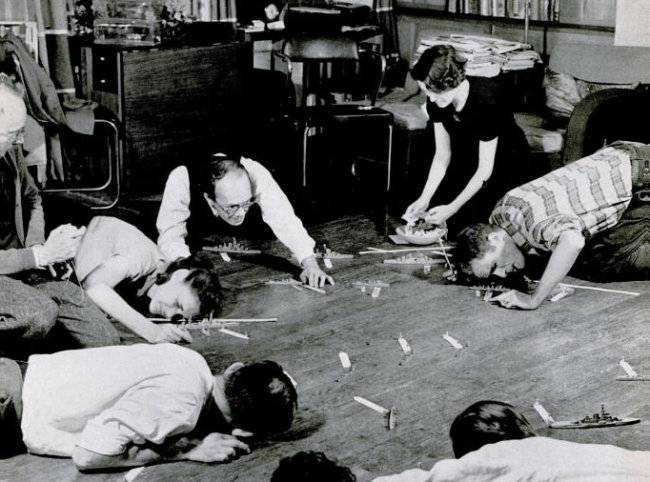
For ease of the example, let’s say my ship has 100,000 points, 10 main guns, 20 secondary guns, six torpedo tubes, and a top speed of 26 knots. It turns out that Elliott’s big guns have dealt me 15,000 points of damage! As I started the turn unscathed I now take my ship sheet and, looking at a total of 15,000 points of damage, can see one of my main and three of my secondary guns have been knocked out as well as my top speed is now 22 knots.
Damn you Captain Miller!!!
Fletcher’s is a great game and for everyone outside the referee is very easy to learn and get dug in with. You can teach the basics in no more than five minutes and even people who have no interest in a wargame will enjoy the experience. My brother, who is not a gamer by any stretch of the imagination, enjoyed when I would run Fletcher’s. I want to say Fletcher’s is the only game outside of one time playing Call of Cthulhu my brother ever took part in.
Of course, I’m talking about my experience with the game and haven’t gotten into the new edition.
As a result of extensive research, this new book brings together previously unpublished material into a comprehensive guide to these classic rules, including:
The full rules, with previously unpublished amendments by Fletcher Pratt.
Optional rules as agreed by Fletcher Pratt.
The previously unpublished strategic game.
Solo wargaming rules.
Guidance on how to play the game.
Updates for the rules as suggested by Donald Featherstone.
A sample scenario by Fletcher Pratt, The Action off Murmansk.
An in-depth evaluation of the rules versus naval reality featuring contributions from experts such as James Dunnigan, Commander Bothwell, Fletcher Pratt and Phil Barker.
Sounds like this is going to be a big winner since I have such a great love of Fletcher’s and have such fond memories of playing?
Too bad that’s not the case with this new edition…

The original rules make up the bulk of first section of the book and they are presented as they were in what appears to be the 1978 edition. I have no issue with that outside the fact that the original range/gun size/armor penetration chart is illegible. This is a crucial part of the game and you need to be able to read this graph in order to have any chance to play. If I took a copy of this chart from my original copy of the game, tore it out of the book, crumpled it, uncrumpled it, made a copy on a broken photo copier, continued to make copies of each previous copy, and then ran the last copy under water I could still read the graph a lot easier than what’s included in this book.
The black and white photographs throughout the book are mainly washed out and poorly reproduced. I can’t say for sure if this was just the case with the book I received or if this is a problem with the entire run. For the most part, the photos are so poor they should never have been included as they’re more distracting than anything else. Speaking of distractions let’s talk about the text of the book itself.
Author John Curry has an unnatural affection for footnotes as they seem to be all over the place, in chapter titles, throughout paragraphs, and I was surprised some of the footnotes don’t have additional footnotes even attached to them! I love the fact that many times there’s a footnote indication but the footnote is nowhere to be found. Yep. I loved that! A personal note to the author: If you have a chapter, that you’ve written, just include your byline; you don’t have to include a footnote to indicate that you’re the author!
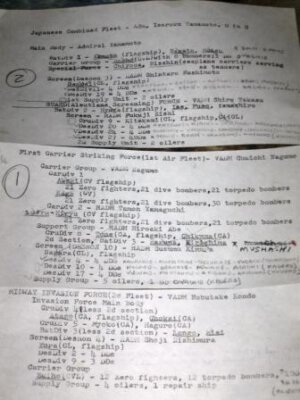
Outside of the original rules, the book is rife with grammatical and word processing errors. I can say with confidence Fletcher Pratt’s Naval Wargame: Wargaming with Model Ships 1900-1945 wasn’t even professionally proofread let alone had an editor grace its pages. Plus, I can barely find a single page that doesn’t have ASCII symbols popping up in the midst of words. Constantly. The book itself is digest sized and sports a fairly large font, yet you’ll see these symbols multiple times on one page. In fact, I counted eight of these errors on one page alone. Add in poor grammar and misspellings and you’ll understand why I was almost tempted to toss this book in the trash once I was finished!
The additions for the most part don’t add a whole lot to the Fletcher’s experience and, even though it’s interesting to see these tidbits from long ago, I can see why some of them haven’t seen the light of day since they originally may have appeared. Way too much space is devoted to defending Fletcher’s historical accuracy as well. I’m right with Donald Weatherstone when he says Fletcher’s is the most fun naval wargame ever created but no one ever said it was a the best simulation of naval combat of the period. Much of the info regarding historical accuracy reads as sour grapes and seems more suited to a debate on ConSimWorld as opposed to something I would expect to find in a published work.
In the end, Fletcher’s is a fantastic game even if I discount my own nostalgia of my experiences with it over the years. As I mentioned early on, I’m sure John Curry has even more affection for the game than I but his edition of the rules are a disaster. A good deal of the blame might be attributed to the company printing this on demand but John has to take credit for the awfulness as well. If Fletcher Pratt’s Naval Wargame: Wargaming with Model Ships 1900-1945 was something to be downloaded for free or a PDF for a couple of bucks I’d be a lot more forgiving. If I can take the time to make sure that proper English, grammar, and formatting are reflected on a website that is available to the public at absolutely no charge I should be able to expect the same for a book that I spend $25.00 (and shipping) to receive. There are no excuses for this wretched presentation of a beloved classic!
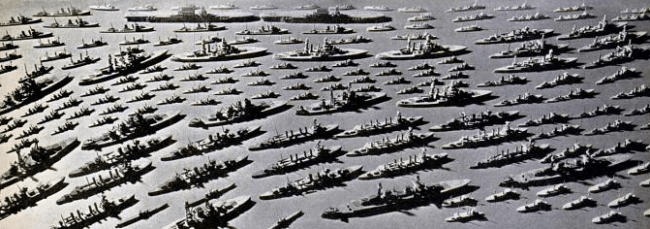
Update 1/21/12: As seen in the comments below, John Curry asked me to contact him regarding what he claims was a “pre-publication test version” I received. I made two attempts to contact him to offer him the opportunity for me to revise this review if this truly was the case and I somehow received a rulebook that is not currently for sale to the public. If there is a corrected book he could send that along – he states people who received this “test version” were contacted and so they could receive the corrected publication. More than a week later I have still received no response from John which leads me to believe the book I received is in fact the edition that is still being sold and no corrected edition actually exists. I see John responded to the review within 24 hours to take issue but as far as my personal correspondence? Not so fast… At this point in time I will assume that there is no corrected version of the book and what I purchased and reviewed is in fact the rulebook on sale. As that is most likely the case, I certainly can’t recommend anyone buying this edition of the Fletcher Pratt rules and I personally will not be purchasing anything else from Wargaming.co in the future.
The absolute worst thing about the book is the fact the armor penetration chart is completely illegible. A photo of the chart is used and all of the photos in the book are blurry. So you can’t make out anything on the chart. Which, if you only have this edition of the rules, makes the game absolutely unplayable…
[rwp-review id=”0″]
- Warhammer 40,000 Roleplay: Imperium Maledictum Starter Set Reviewed - Mar 31, 2025
- The RiverBank Roleplaying Game Launches on BackerKit - Mar 31, 2025
- Land of Eem: The Mucklands Sandbox Campaign Setting Reviewed - Mar 30, 2025



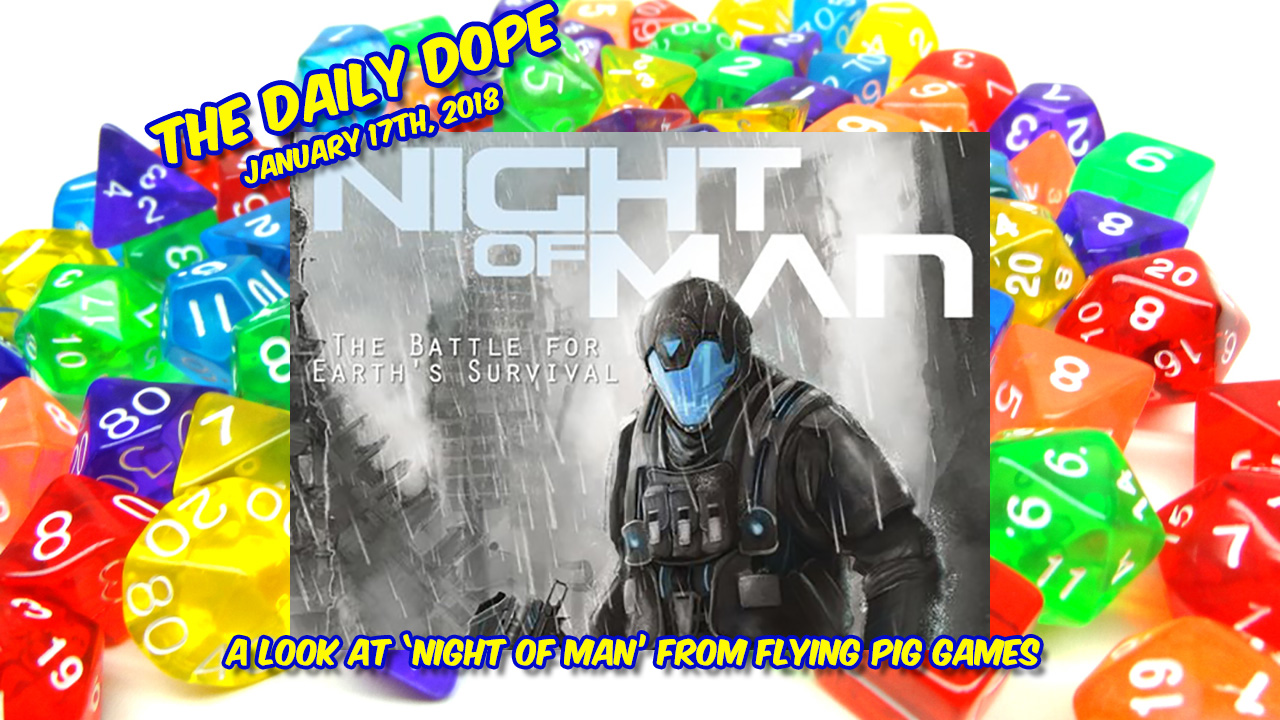


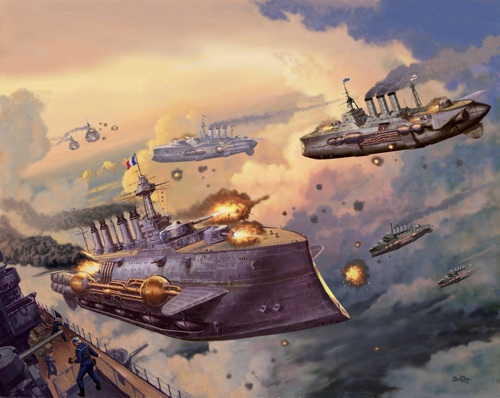



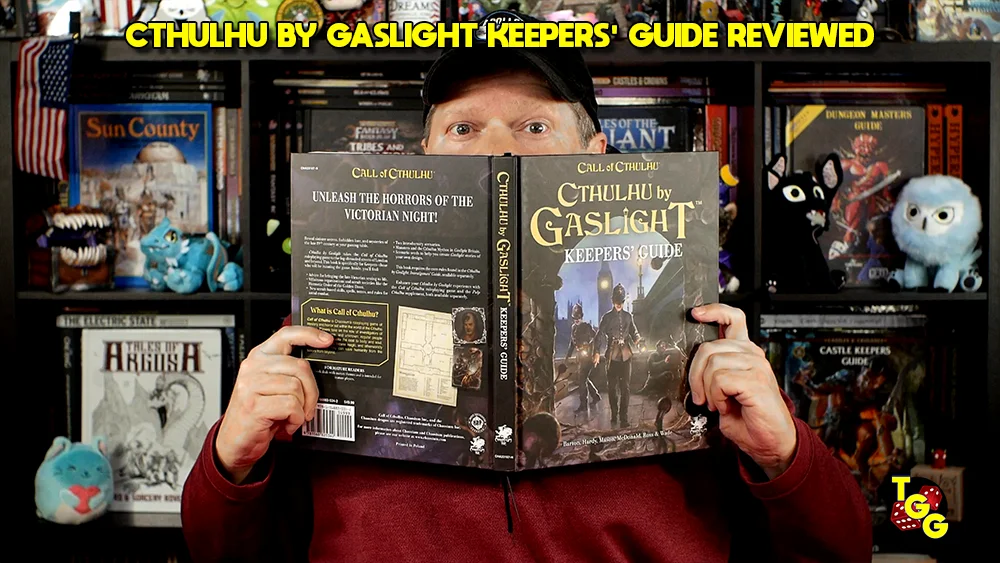

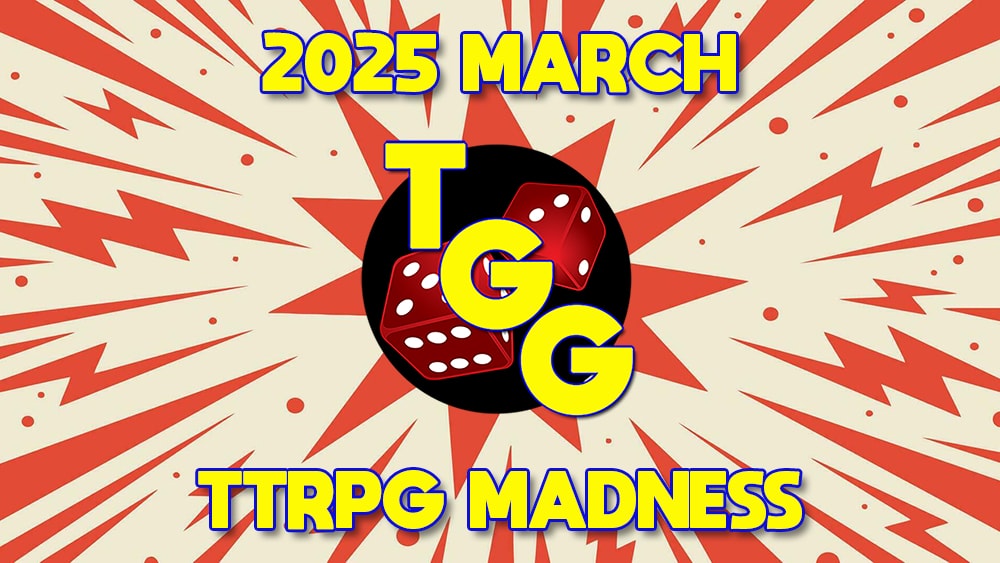


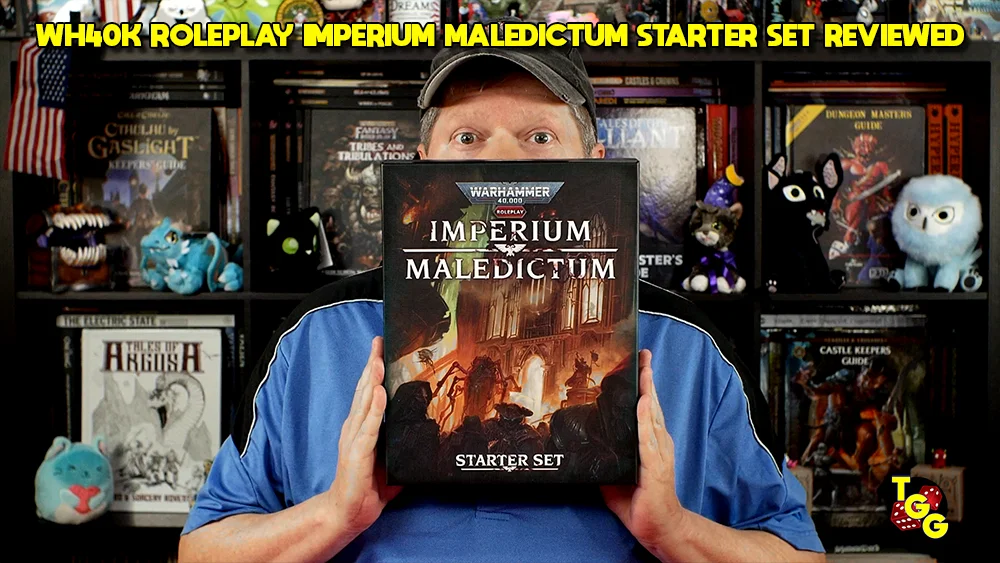



Thank you for your feedback. Please contact me via my website and I will sort something out for you.
I checked my records and the problem was a pre-publication test version was released by the printer (Lulu), not the final version. We thought I had contacted all the people who recieved the faulty version and replaced it. Any questions on this, just contact me via the project website.
This to me was the most interesting thing I’ve ever heard on TGG podcasts. What a truly great story guys!
John, in honesty, I ordered the book two months after it went on sale – the publication date shows October of 2011 as the book is obviously a print on demand. That would mean plenty of people, in the U.S., received the same terrible presentation as I did. If that’s the case, someone at Lulu needs to have their head handed to them. I’ll be more than happy to make an addition to the review if I were to receive a copy of the rules – now available to the gaming public which is corrected – but the review has to stand as it currently does because this is what the paying public was receiving from Lulu when my order was placed and there’s no indication, that I can find anywhere, informing this was an issue addressed and rectified for those who purchased the book.
As seen in the comments above, John Curry asked me to contact him regarding what he claims was a “pre-publication test version” I received. I made two attempts to contact him to offer him the opportunity for me to revise this review if this truly was the case and I somehow received a rulebook that is not currently for sale to the public. If there is a corrected book he could send that along – he states people who received this “test version” were contacted and so they could receive the corrected publication. More than a week later I have still received no response from John which leads me to believe the book I received is in fact the edition that is still being sold and no corrected edition actually exists. I see John responded to the review within 24 hours to rebut but as far as my personal correspondence? Not so fast… At this point in time I will assume that there is no corrected version of the book and what I purchased and reviewed is in fact the rulebook on sale. As that is most likely the case, I certainly can’t recommend anyone buying this edition of the Fletcher Pratt rules and I personally will not be purchasing anything else from Wargaming.co in the future.
If you would like to drop me an email, I will send you another copy of the book and refund your purchase.
With thanks
John
I bought the kindle version of the book and I thought it was a brilliant work at preserving the history of our hobby the game includes rules for a land game, a campaign and solo games I never knew existed.. The layout was fine on the kindle. I think your review is pretty harsh and a bit unfair. You should contact Mr. Curry and let him sort out your problems. There is a trove of information on this game that I have never seen and I’ve been wargaming since the 1960s.
I had contacted Mr. Curry a few times and never received a corrected copy. I can only review what was made available to me and the print on demand book I received was both unreadable due to each page having huge numbers of formatting errors and unusable since the critical armor penetration chart was illegible. You might feel my review is unfair if applied to the edition you received on Kindle but that’s not the edition I received in print.